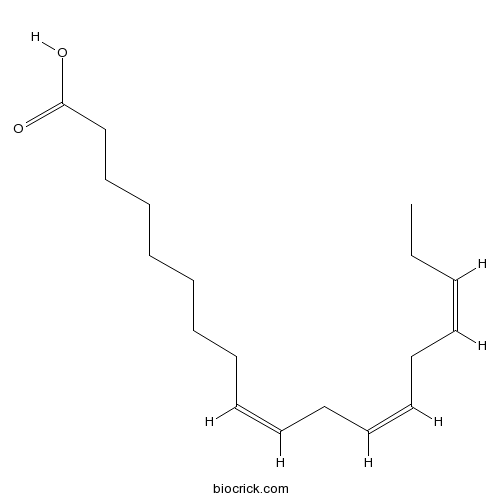Vaccinium corymbosum
Vaccinium corymbosum
1. The products in our compound library are selected from thousands of unique natural products; 2. It has the characteristics of diverse structure, diverse sources and wide coverage of activities; 3. Provide information on the activity of products from major journals, patents and research reports around the world, providing theoretical direction and research basis for further research and screening; 4. Free combination according to the type, source, target and disease of natural product; 5. The compound powder is placed in a covered tube and then discharged into a 10 x 10 cryostat; 6. Transport in ice pack or dry ice pack. Please store it at -20 °C as soon as possible after receiving the product, and use it as soon as possible after opening.
Natural products/compounds from Vaccinium corymbosum
- Cat.No. Product Name CAS Number COA
-
BCN8319
alpha-Linolenic acid463-40-1
Instructions

Managed and Wild Bee Flower Visitors and Their Potential Contribution to Pollination Services of Low-Chill Highbush Blueberry (Vaccinium corymbosum L.; Ericales: Ericaceae).[Pubmed: 30010801]
Highbush blueberry (Vaccinium corymbosum L.; Ericales: Ericaceae) is an important crop grown throughout the eastern United States and Canada. Cross-pollination by insects greatly enhances pollination and fruit set in highbush blueberry. In Florida, low-chill cultivars that flower during the winter when most bees are dormant are used, thus, making it difficult to utilize and depend on unmanaged bees. We investigated flower visitation rates by managed and wild bees and the subsequent berry formation, berry weight, and number of seeds/berry in highbush blueberry fields in north-central Florida. Additionally, we tested three pollinator treatments: 1) pollinator-excluded flowers, 2) open-pollinated treatments that were available to managed and wild bees, and 3) flowers that were hand pollinated. Overall, we found seven native bee species that contribute to highbush blueberry pollination in Florida, but managed honey bees and bumble bees were the main flower visitors. Additionally, 14.5 times more blueberries formed in the open treatments than in the pollinator exclusion treatments, thus illustrating the economic impact bees have on blueberry pollination. Most of the wild bees observed visiting blueberry flowers were ground-nesting species that need uncultivated areas for nesting sites. Therefore, leaving field edges uncultivated and some undisturbed habitat may increase native bee numbers within blueberry farms over time.
Vaccinium Extracts as Modulators in Experimental Type 1 Diabetes.[Pubmed: 29847743]
Antihyperglycemic effects of four extracts obtained from leaves and fruits of Vaccinium myrtillus and Vaccinium corymbosum were assessed in diabetic rats. In addition, the effects of extracts on diabetic-related complications such as the development of diabetic cataract and oxidative stress were evaluated. Type 1 diabetes was induced with a single dose of streptozotocin in Wistar rats. The rats were randomly divided into seven equal groups: NC-normal control, DC-diabetic control, PC-positive control treated with metformin, VML-received V. myrtillus leaf extract, VMLF-received VML and fruit extract, VCL-received V. corymbosum leaf extract, and VCLF-received VCL and fruit extract. Body weight and glucose levels were monitored every second week. After 8 weeks of treatment, serum glucose, insulin, and malondialdehyde were measured. Lenses were removed after sacrifice and eight lenses from each group were randomly selected for evaluation of cataract development. A decrease in body weight was observed in all diabetic groups in the first weeks. In the VML group, no significant decrease was observed. Glucose levels during the experiment were high in DC, PC, and VCL groups, with no improvement during the 8 weeks. In VML, VMLF, and VCLF groups, a decrease in blood glucose levels was observed. Similar results regarding serum insulin and glucose levels at the end of the experiment were observed within groups. V. myrtillus extracts prevented the development of cataract compared with the DC group (P < .05).


